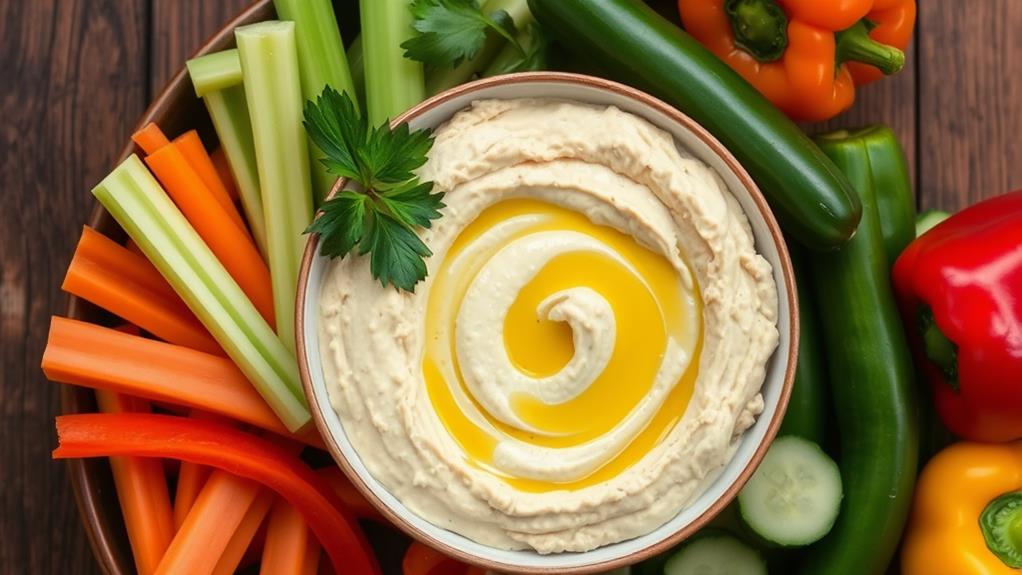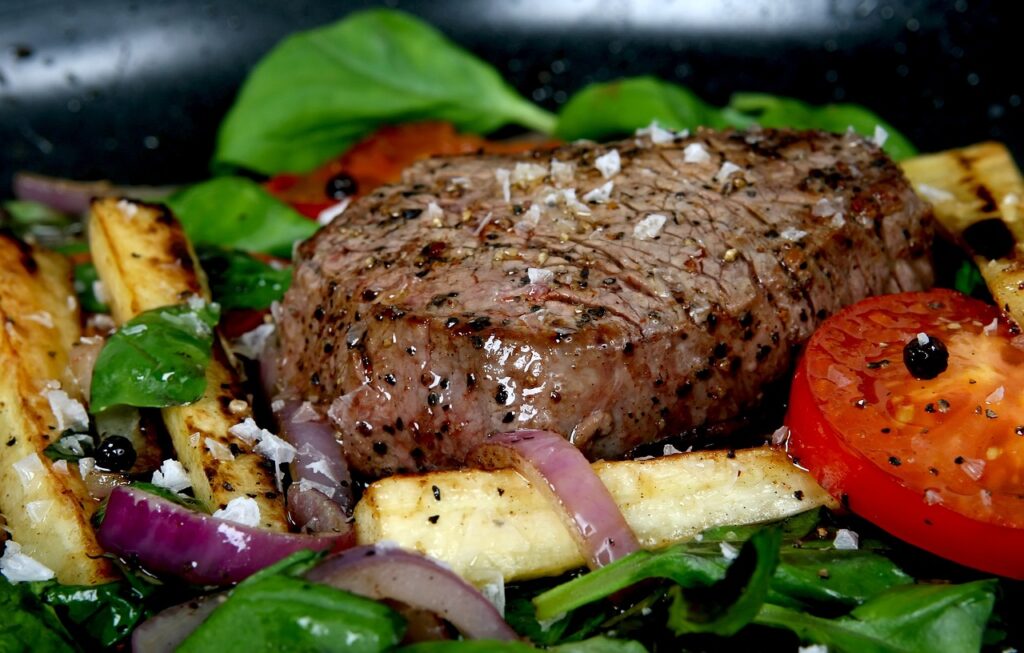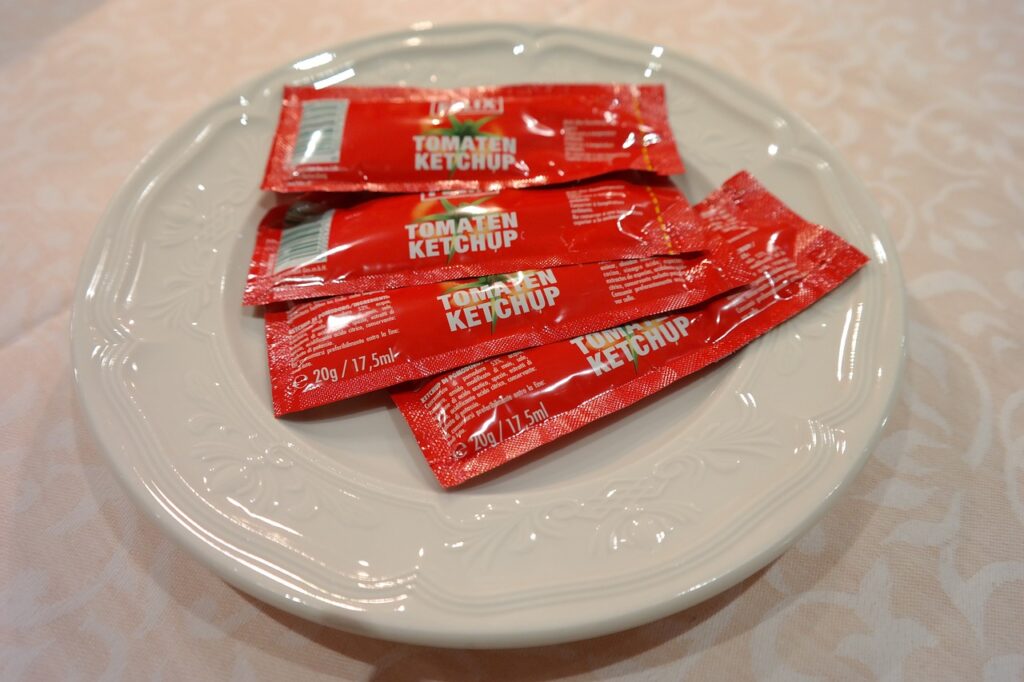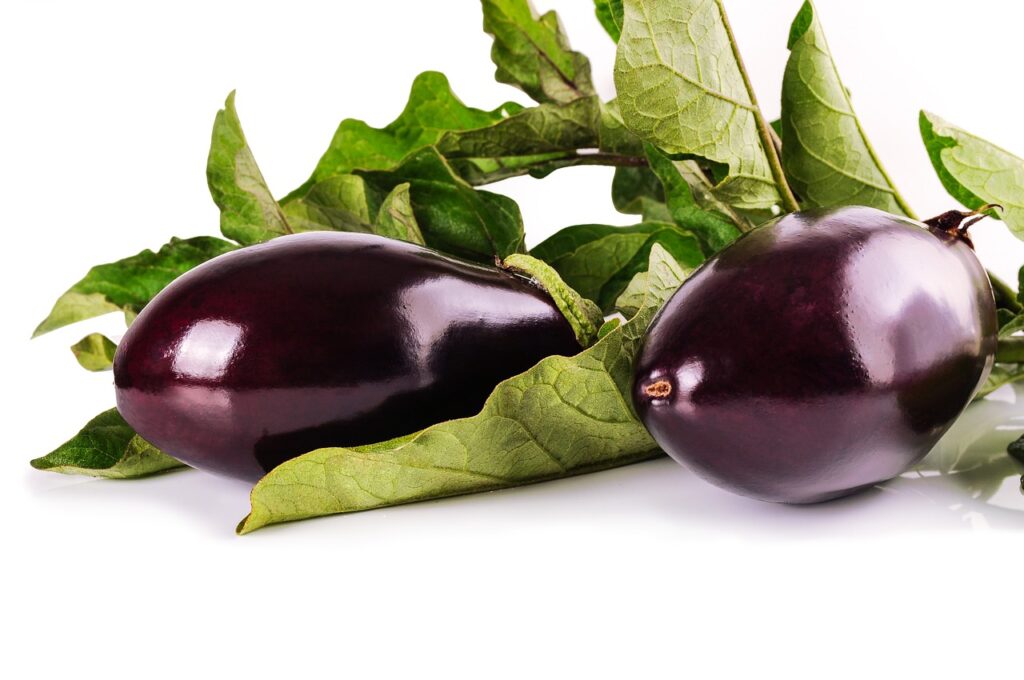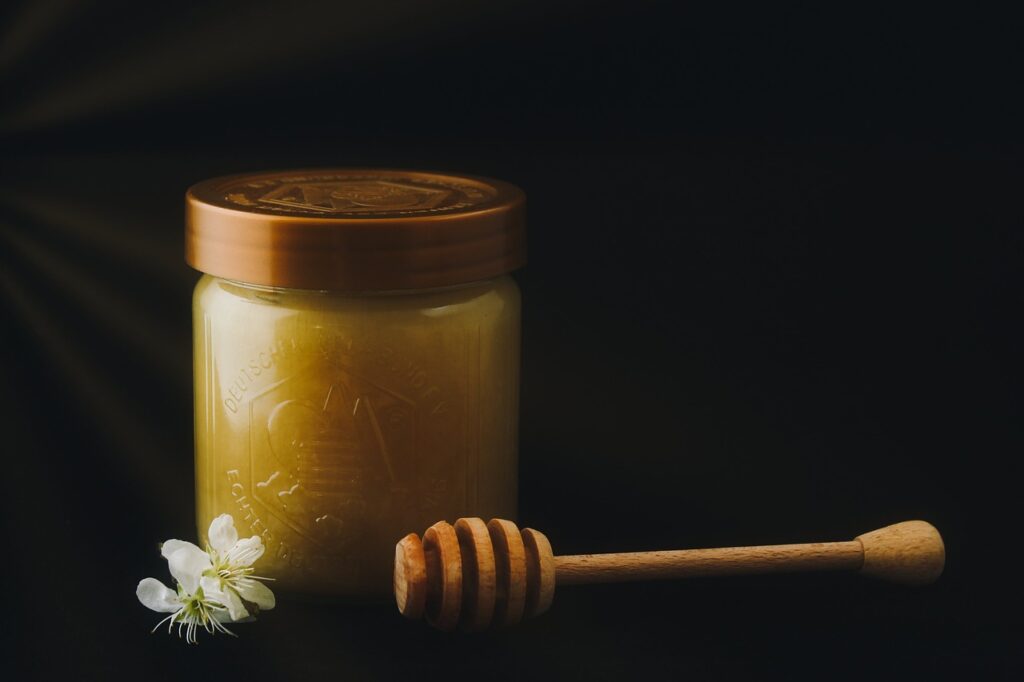Hummus can be keto-friendly if you opt for low-carb versions. Traditional hummus has a higher carb count, but alternatives like cauliflower hummus contain only about 3 to 4 grams of net carbs per serving. Look for options with healthy fats from ingredients like tahini and olive oil, which align well with the keto diet's macronutrient ratio. Pair your hummus with non-starchy vegetables like celery or cucumbers to keep your carb intake low while increasing fiber. Understanding these variations will help you enjoy hummus while staying on track with keto, and there's more to explore about it!
Hummus Composition and Carbohydrates
When it comes to hummus composition, it's important to take into account the carbohydrate content, especially if you're following a keto diet. Traditional hummus is made from chickpeas, which pack about 27 grams of carbohydrates per 100 grams. That makes it high in carbs and generally not keto-friendly.
A standard 2-tablespoon serving of traditional hummus has around 6 grams of total carbs and 4 grams of net carbs after accounting for fiber. This high carbohydrate content can lead to increased insulin demand, which is something those on a ketogenic diet aim to avoid for better blood sugar control.
However, you don't have to give up hummus entirely. Low-carb variations, like hummus made from cauliflower, can greatly slash that carbohydrate count, typically offering just 3 to 4 grams of net carbs per serving.
Making your own hummus with keto-friendly ingredients, such as cauliflower, tahini, and olive oil, can even bring the carb content down to nearly zero.
Always check for nutritional transparency when selecting hummus, especially with store-bought varieties. They can vary widely in carb content due to added sweeteners and fillers.
Keto Diet Basics
Hummus lovers can still enjoy their favorite dip while sticking to a keto diet by understanding the fundamentals of this low-carb lifestyle. The keto diet focuses on a macronutrient ratio of about 70-80% fat, 10-20% protein, and only 5-10% carbs. By limiting your daily carb intake to around 20-50 grams, you can promote ketosis, where your body burns fat instead of glucose for fuel. This process not only aids in weight loss but also enhances insulin sensitivity, which is vital for maintaining stable blood sugar levels better insulin sensitivity.
To thrive on a keto diet, you'll want to avoid foods high in carbs, such as grains, sugars, and starchy vegetables. Instead, emphasize healthy and delicious options rich in fats, like avocados and nuts.
It's important to keep track of your net carb count, which is your total carbs minus fiber, to stay within your daily limits.
As you shift into this high-fat lifestyle, you might experience temporary side effects known as the "keto flu," which can include fatigue and irritability. Consulting with healthcare professionals or nutritionists can help guarantee you're meeting your dietary needs while adopting this way of eating.
With the right approach, sticking to a keto diet can be both satisfying and manageable.
Low-Carb Hummus Alternatives
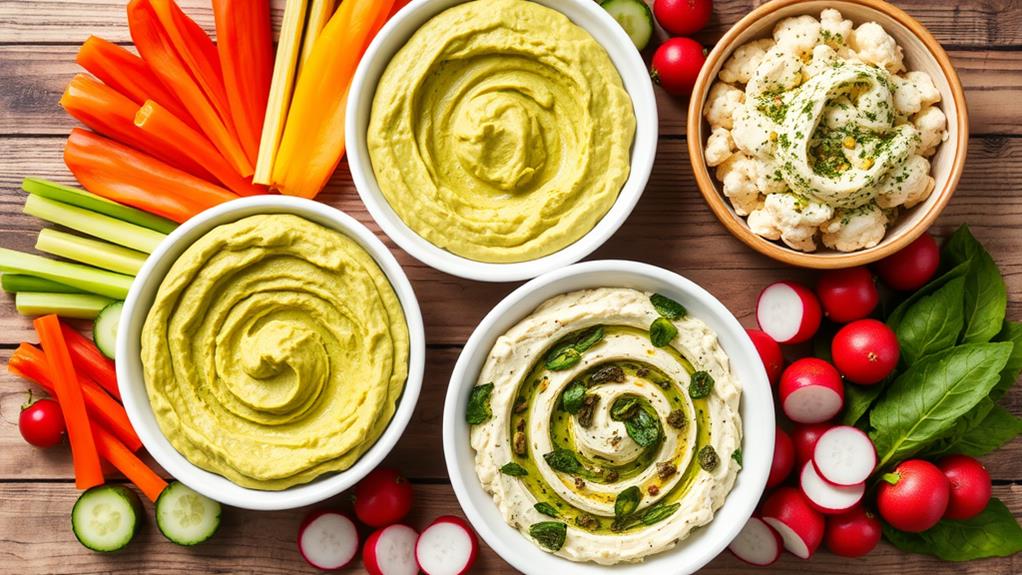
If you're looking for low-carb hummus alternatives, cauliflower-based hummus is a fantastic option that's easy to make at home.
Incorporating ingredients like avocado can enhance the flavor and provide beneficial fats, making it a great choice for a keto diet due to its nutrient-rich profile.
You might also want to explore avocado dips, which aren't only delicious but low in carbs as well.
Plus, checking out store-bought options can save you time while still keeping your carb count in check.
Cauliflower-Based Hummus Recipe
Cauliflower-based hummus is frequently hailed as a delicious low-carb alternative to traditional hummus, making it perfect for those following a keto diet. By substituting chickpeas with roasted cauliflower, you greatly reduce the carbohydrate content to about 3.4g net carbs per serving. This creamy cauliflower hummus not only meets your low-carb needs but also offers a burst of flavor.
To make this keto-friendly dip, start by roasting cauliflower florets at 200°C for around 25 minutes. Once they're golden and tender, blend the roasted cauliflower with tahini, olive oil, fresh lemon juice, garlic, and your favorite seasonings. Adjust the consistency with a little water if necessary, and you'll have a smooth, satisfying dip.
This recipe yields approximately 1⅓ cups of hummus, serving about seven people—a perfect snack for sharing. Each serving contains roughly 112 calories, ensuring you enjoy a nutrient-dense option without the high carbohydrates found in traditional hummus.
Benefits of Avocado Dips
When it comes to finding delicious low-carb alternatives, avocado dips really stand out as a fantastic option. With only about 4 grams of net carbs per serving, they're perfect for your keto diet.
Avocado dips, like avocado hummus, are loaded with healthy fats, providing around 15 grams of fat per serving, which aligns with the high-fat requirements of a keto lifestyle.
Not only do they fit perfectly into your meal plan, but avocados also bring a wealth of nutrients to the table. Packed with essential vitamins and minerals like potassium, vitamin E, and folate, they support your overall health.
Plus, the creamy texture and mild flavor of avocado dips make them a delicious low-carb alternative that can easily mimic traditional hummus, so you won't miss out on flavor.
Preparing homemade avocado dips is a breeze, often taking just 5-10 minutes. You can whip up a quick snack or party dip that's both satisfying and keto-friendly!
Store-Bought Options Comparison
Maneuvering the world of store-bought hummus can be tricky, especially for those on a keto diet. While many options contain around 4 grams of net carbs per 2-tablespoon serving, some brands can exceed 6 grams due to added sweeteners and preservatives.
It's essential to check labels and guarantee you're choosing high-quality options that align with your keto goals.
If you're seeking low-carb hummus alternatives, consider homemade versions using cauliflower instead of chickpeas, which can yield nearly zero carbs per serving. Additionally, baba ganoush is an excellent flavorful substitute, containing under 1 gram of net carbs per serving.
When shopping for store-bought hummus, look for brands that prioritize nutritional transparency and avoid unnecessary additives. Popular brands may offer a range of flavors, but always keep an eye on the net carbs to guarantee they fit within your daily limits.
With a little diligence, you can enjoy a tasty, keto-friendly dip that satisfies your cravings without derailing your dietary efforts. So next time you're at the store, remember to choose wisely and enjoy your low-carb snacking!
Pairing With Non-Starchy Vegetables
Pairing hummus with a variety of non-starchy vegetables not only keeps your carb count low but also boosts your intake of essential nutrients and fiber. When you dip raw cauliflower, celery, cucumbers, or bell peppers into hummus, you're enjoying a flavorful snack that aligns perfectly with the keto diet. These non-starchy vegetables are low in calories and carbohydrates, making them ideal for maintaining your low carbohydrate intake while enhancing your overall diet.
Additionally, dishes like Cauliflower Fried Rice can provide creative ways to include more low-carb options in your meals.
Leafy greens like spinach and kale can also serve as excellent vehicles for hummus. They provide additional vitamins and minerals without greatly impacting your carb counts. Plus, the crunchy texture of raw broccoli and cauliflower florets complements hummus as a dip, creating a satisfying snacking experience that adheres to keto guidelines.
Using non-starchy vegetables as dippers allows you to savor hummus in moderation, ensuring you stay within your carb limits. This strategy not only helps you enjoy the creamy goodness of hummus but also supports your health goals on the keto diet.
Nutritional Benefits of Keto Hummus
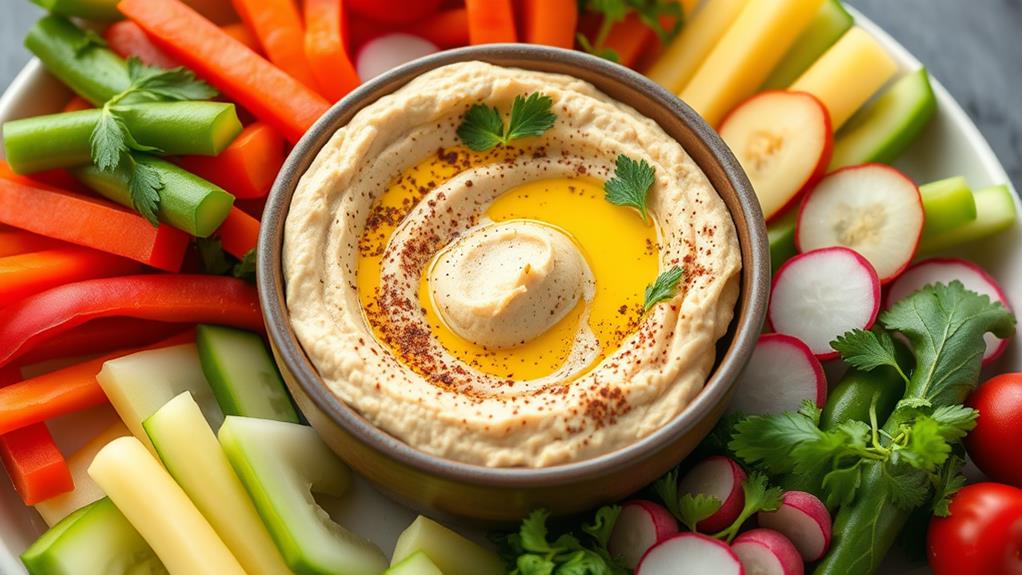
When you choose keto hummus, you're opting for low-carb ingredients that keep your diet on track.
This dip not only provides healthy fats from tahini and olive oil, but also incorporates other healthy fats like avocado oil which is rich in monounsaturated fats, further enhancing its nutritional profile.
Additionally, it boosts your nutrient intake with the added benefits of cauliflower.
Let's explore how these elements contribute to a satisfying and nutritious snack.
Low-Carb Ingredients Overview
In today's health-conscious world, embracing low-carb ingredients in your diet can be a game-changer, especially with keto-friendly options like hummus.
Traditional hummus swaps chickpeas for cauliflower or black soybeans, greatly reducing carbohydrates to about 3 grams of net carbs per serving. This makes keto hummus a perfect choice for your low-carb lifestyle.
Key ingredients enhance both flavor and nutrition. Olive oil is a staple, bringing healthy monounsaturated fats that aid in nutrient absorption and offer anti-inflammatory benefits.
Fresh garlic not only boosts the flavor but also adds potential health benefits, including antibacterial properties and immune support.
The addition of lemon juice provides a zesty acidity, while also contributing vitamin C, which supports your immune function and elevates the overall nutritional profile of the dip.
Tahini, another vital component, gives keto hummus its creamy texture, along with essential nutrients like calcium and iron.
Healthy Fats Contribution
Healthy fats play a pivotal role in the nutritional benefits of keto hummus, making it an excellent addition to your low-carb diet. Keto hummus typically incorporates healthy fats from ingredients like tahini and olive oil, essential for maintaining energy levels while you're in ketosis. One serving can contain around 9.8 grams of fat, providing a significant source of healthy fats that support your keto lifestyle.
The use of tahini, made from ground sesame seeds, not only adds healthy fats but also brings essential nutrients such as calcium, magnesium, and iron. These nutritious ingredients enhance the overall profile of your keto hummus while contributing to satiety. This means you'll feel fuller longer, which helps manage hunger and reduce the likelihood of overeating.
Incorporating keto hummus as a dip or spread allows you to enjoy delicious flavors while consuming healthy fats. It's a fantastic way for keto dieters to add variety to their meals without compromising on dietary goals.
With its rich taste and nutritious components, keto hummus stands out as a satisfying option that aligns perfectly with your low-carb journey.
Nutrient Density Benefits
Nutrient density is a standout feature of keto hummus, making it a smart choice for your low-carb diet. Unlike traditional hummus, which contains around 6 grams of net carbs, keto hummus typically made from cauliflower offers just 3-4 grams per serving. This low carbohydrate content allows you to enjoy a tasty snack while staying aligned with your ketogenic goals.
One of the key benefits of keto hummus is its high healthy fats content, derived from ingredients like tahini and olive oil, which helps you maintain the macronutrient balance essential for a keto lifestyle.
Additionally, the nutrient density of homemade keto hummus is enhanced by cauliflower, packed with vitamins C and K, folate, and fiber, all while being lower in calories than chickpea-based versions.
When you whip up your own hummus recipe, you avoid added sugars and preservatives, promoting healthier eating habits. Each serving also provides essential nutrients such as potassium and iron, supporting muscle function and electrolyte balance during ketosis.
Preparation and Cooking Tips
Roasting cauliflower florets at 400°F for 20-25 minutes is a game changer for creating keto-friendly hummus. This method enhances the flavor and texture, giving your hummus a deliciously creamy consistency.
Additionally, by using low-carb ingredients like cauliflower, you can greatly lower the glycemic load of your meal, promoting better glucose metabolism.
Here's how to prepare it:
- Roast the Cauliflower: Toss your cauliflower florets with olive oil and any spices you prefer, then roast until golden brown.
- Cool Before Blending: Allow the roasted cauliflower to cool down before blending it with tahini, fresh lemon juice, garlic, and sea salt.
- Adjust Consistency: Start by adding 4 tablespoons of water to the mixture, gradually increasing until you reach your desired thickness. Don't rush this step; the right texture makes all the difference!
- Add Flavor: For an extra kick, blend in spices like smoked paprika or cumin, or fresh herbs such as parsley to elevate the taste.
Once you've perfected your creamy hummus, store it in an airtight container in the refrigerator for up to a week, or freeze it for up to six months. Enjoy your keto-friendly snack!
User Feedback and Popularity

The feedback on keto-friendly hummus has been overwhelmingly positive, with many users raving about its delicious taste and creamy texture. As you explore this low-carb diet option, you'll find that its versatility stands out. Users share their delicious recipes, making substitutions that cater to personal preferences, ensuring everyone can enjoy it.
One standout feature is the roasting process, which considerably enhances the flavor of cauliflower, a key ingredient in keto hummus. Many users recommend longer roasting times to achieve ideal taste, adding a depth that elevates the dish.
Ease of preparation is another reason for its popularity. Families and friends appreciate how simple it's to whip up a batch, making keto hummus a go-to choice for gatherings.
What's more, feedback shows that even non-keto eaters enjoy it, proving that this creamy texture and flavor appeal to a wider audience.
Incorporating keto hummus into your meals can satisfy cravings while sticking to your low-carb diet, making it not just a healthy choice, but a genuinely enjoyable one.
Conclusion
Incorporating keto-friendly hummus into your diet can be a game-changer for your low-carb lifestyle. Imagine Sarah, who struggled with cravings while on keto. By swapping traditional hummus for a low-carb version made with cauliflower, she found a satisfying dip that kept her on track. With the right ingredients and pairings, you can enjoy the creamy, flavorful benefits of hummus without derailing your keto goals. So go ahead, indulge in that guilt-free dip!

